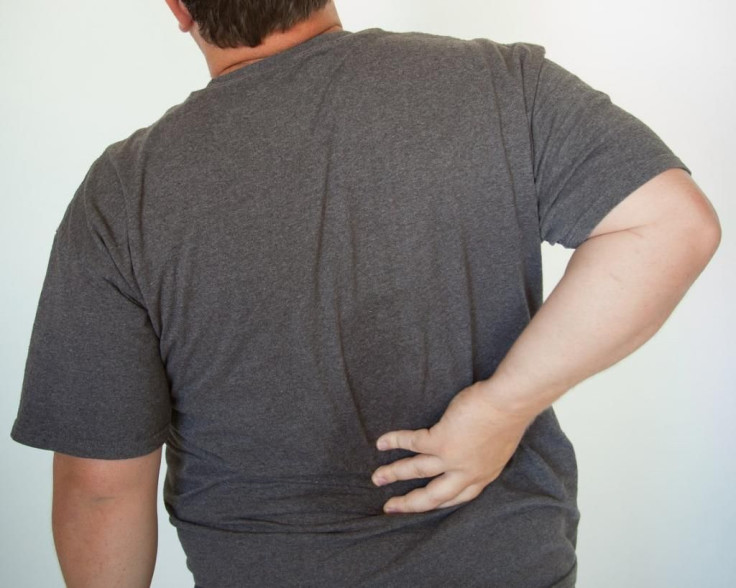Evidence Mounting to Use Complementary Therapy for Low Back Pain

“Oh, my aching back!” is a complaint heard worldwide.
Backaches are a primary reason for doctor visits, since many people will feel that pain in their lifetime. In 2016, treating backache pain cost the US healthcare system $134.5 billion, more than any other condition. Chronic low back pain -- not the occasional “Ooh, I shouldn't have moved that couch by myself” complaint -- has been a treatment challenge to healthcare providers for decades.
Mind-body therapies to consider
The main treatment for back pain has been medication. But in 2017, when the opioid crisis reached its peak, healthcare providers had to find safer treatments.
And apparently they have. Many healthcare providers today are using complementary, or alternative, medicine to treat pain. These are a range of so-called non-mainstream therapies that are often used alongside standard treatments.
Mind-body therapy, according to the National Cancer Institute, is a therapy that combines controlled breathing, mental focus and physical movements, with the aim of relaxing mind and body.
The American College of Physiciansdid a review of safer treatments and found evidence that changed their minds about how to treat back pain. In 2017, they updated their guidelines to include heat therapy, massage, acupuncture and spinal manipulation as the top treatments. They said that medications—including ibuprofen, muscle relaxers and opioids—should be a last resort.
And in a study published in 2018 in the Journal of the American Medical Association (JAMA), those treated with opioids during a dental extraction had higher pain levels than those who did not use opioids during the same procedure.
Heat therapy, massage and spinal manipulation
Heat therapy and massage are used to calm inflammation and boost mobility. Spinal manipulation is a hands-on therapy provided by a doctor of chiropractic. It involves combining rapid movements with slower movements to adjust and stimulate the spine and surrounding muscles.
“As a chiropractor and nurse practitioner, I use conservative care like chiropractic adjustments, acupuncture or massage,” said Mary E. Pregler-Belmont, who practices in Dubuque, Iowa. Her patients, she said in an email interview with Medical Daily, have found relief with exercises, stretches and relaxation positions, along with ice and heat.
Acupuncture
Linda Farynowski, a 56-year-old school teacher from British Columbia, Canada, spent five years visiting doctors and getting scans. Doctors said she had arthritis in her back and would have to live with lower back pain. “I was looking at taking classes on living with pain when someone recommended acupuncture,” she said in an interview.
Ms. Farynowski’s visits with Zea Friesen, a registered acupuncturist in British Columbia, weren’t an instant cure. But after several weeks, she was pain-free and now just has the occasional twinge. “Now, if my back starts hurting, I can typically get rid of it with 2 to 3 treatments,” said Ms. Farynowski.
Dr. Pregler-Belmont said her patients have found great success using acupuncture, too, but she warned that some insurance providersmay not cover the treatment.
Acupuncturists use thin needles inserted at specific points throughout the body. The needles may help the body release painkilling chemicals called endorphins. Ms. Friesen explained that acupuncture may release a flood of these chemicals into the nervous system, causing relaxation and balance.
Cognitive behavioral therapy (CBT) and physical therapy
Meriah Ward, MSN, a nurse practitioner in Raleigh, N.C., often recommends CBT, exercise and physical therapy for her patients living with chronic low back pain. Because the combination has helped, she keeps recommending it.
Physical therapy works to strengthen the core muscle groups that support the lower back, improving flexibility and posture. They are often combined with mind-body treatments.
Cognitive therapy and stress reduction therapy use relaxation and coping techniques to ease pain. Stress can make pain worse, and worsening pain can increase stress. “CBT has been beneficial in helping my patients address their stress and pain a different way with more thoughtful approaches,” Ms. Ward told Medical Daily.
When back pain requires urgent treatment
Contact your healthcare provider immediately when back pain results from a recent injury, especially a fall or blow to the head.
Other reasons to contact your provider immediately include:
• Fever
• New loss of bladder or bowel control
• Numbness or tingling in your back, legs or feet
• Leg weakness or inability to walk
• Severe pain that doesn’t improve
The take home
Promising treatments such as acupuncture, massage and CBT are at the top of the treatment list for low back pain. Combining exercise and physical therapy with these low-tech treatments means there’s even more hope for those who live with chronic low back pain.
Julie Nyhus is a nurse practitioner and freelance health and medical writer. She lives in Indiana, a five-minute walk from Lake Michigan, with her husband and Bernese Mountain dog.
Published by Medicaldaily.com



























